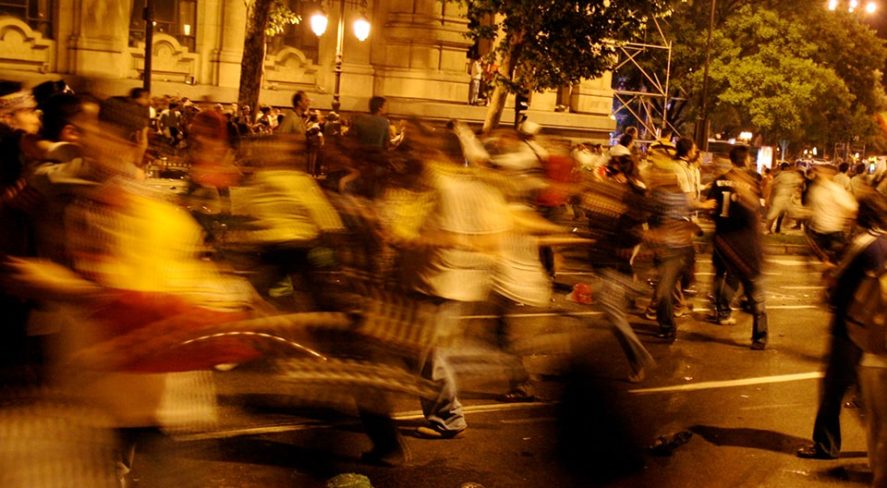Why Hostile Vehicle Incidents Can’t Be Ignored

With a clear pattern of incidents, here’s why cities must pay attention – and what SIA is doing to drive awareness

The road to Waukesha, Wisconsin, runs from Santa Monica, California. It runs from Stillwater, Oklahoma. It runs from Austin, Texas, and Charlottesville, Virginia. The road runs from New York City and New Orleans, Louisiana. This is a road paved with good intentions and wishful thinking.
It’s not a real road of course – and it is a road that has a heavy toll, with the price paid by innocent people over two decades.
Vehicle-into-crowd incidents are frequent, they are dangerous, and they are deadly. Ask officials in New Orleans, where 28 people were injured by a drunk driver during Mardi Gras in 2017, or New York City, where one was killed and 20 injured in a Times Square vehicle attack in 2017 and where eight were killed and 11 injured in a terrorist attack on the West Side bikeway a few months later. It was a similar story in Charlottesville, Virginia, where one was killed and 35 injured in a vehicle attack on a demonstration in 2017. If you cannot reach them, ask officials in Austin Texas where four persons were killed and 25 injured at SXSW by a drunk driver fleeing arrest, or ask the same question in Stillwater, Oklahoma, where four were killed and 46 injured in 2015 at the Oklahoma State University homecoming parade by an impaired driver, and see if they can speak with you. If not, you can probably reach someone in Santa Monica, California, where 10 persons were killed and over 70 hospitalized in 2003 by an impaired driver at a farmer’s market.
The Security Industry Association (SIA) has been educating the industry about and advocating for greater protection of public spaces since 2016, particularly through in-person events and through the work of the SIA Perimeter Security Subcommittee – and as evidenced at incidents like Waukesha, our work is far from done. Our industry has seen the danger to safety and security at public events when cities turn streets and pedestrian areas into temporary outdoor entertainment venues, and simultaneously, our members have developed a wide array of effective and affordable solutions that can be deployed quickly or permanently that will place a tested and secure barrier between vehicles and crowds.
In 2017, a SIA member’s products limited the impact of a Times Square vehicle rampage. In 2018, SIA held a live briefing on Capitol Hill focused on vehicular attacks. At our 2019 SIA GovSummit government security conference, a Capitol Hill event again brought the topic to the halls of Congress. In 2020, we co-presented an event in the UK with the Perimeter Security Suppliers Association on such vehicle-intrusion-incidents.
Our work continues. The SIA Standards Committee, as part of the work of the SIA Perimeter Security Subcommittee, is coordinating with organizations in the UK and Australia in addition to several federal agencies to update best practices and procedures for cities, venues, retail centers and other indoor and outdoor venues on how to assess risks, threats and vulnerabilities – including threats from hostile vehicles.
The group is planning a February 2022 update on the threat risk and vulnerability assessment efforts in the Washington, D.C., area, and intends to release a white paper at the same time, and then will be taking the message on the road with educational sessions and meetings at ISC West 2022, and at SIA’s 2022 GovSummit with a special day-2 event around this topic on May 25.
Along the way, it’s clear that awareness is increasing of the threat and of the available solutions to such attacks. One crucial recommendation after the Santa Monica tragedy in 2003 came from the definitive report on that incident from the National Transportation Safety Board (NTSB). The NTSB recommended that when a street closing results in large crowds, a city should consider the use of effective barriers to protect pedestrians and participants. Just as in Santa Monica, Waukesha had only plastic saw horses to define their parade route.
The NTSB suggested: “Had Santa Monica installed a temporary rigid barrier system, such as bollards, at the closure limits of the Santa Monica Certified Farmers’ Market, the barrier system might have arrested or reduced the forward motion of the accident vehicle, thereby preventing it from continuing into the farmers’ market and eliminating or greatly reducing the number of casualties.”
More broadly, the Santa Monica report highlights a more universal truth for municipal officials – not only are they all on notice that pedestrians are increasingly targeted on purpose in America, it is also clear that crowds in areas perceived to be under the control of public safety officers presume that they are safe from accidental or deliberate vehicle incursions. They assume that if the police have a presence on scene or there are traffic cones set up, the area has been made safe.
Fortunately, in addition to the awareness around the threat of vehicle-intrusion incidents, there are new possibilities of funding such measures. The recently enacted $1.3 trillion infrastructure bill may provide funding for thorough safety and security planning and the purchase and implementation of barriers or other measures.
The need to protect pedestrians and crowds from deliberate or accidental vehicle intrusions is clear. Officials in cities and counties large and small have been placed on notice by recent events and national coverage, and a failure to act will result in two things: more body counts, and more lawsuits. SIA urges cities and municipalities to not ignore this opportunity to protect crowded spaces for many years to come.
